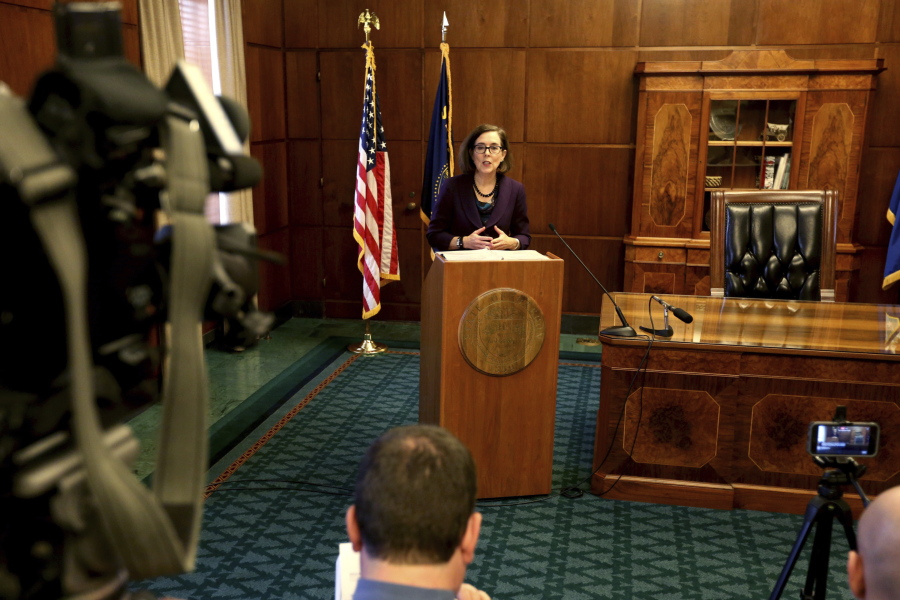SALEM, Ore. — Stressing that she was loathe to make cuts, Oregon Gov. Kate Brown presented her budget proposal Thursday aimed at addressing a whopping $1.7 billion shortfall while maintaining funding for critical areas, including education and health care.
“I had to make some very difficult decisions,” the Democratic governor told a news conference in her Oregon State Capitol office.
The proposed budget is $20.6 billion, a roughly 9 percent increase over the $18.9 billion in combined general funds and lottery funds that the Democratic-dominated Legislature approved last year for the current biennium.
House Republican Leader Mike McLane said the proposal doesn’t go far enough and urged Brown and Democratic lawmakers to have “an honest conversation about our state’s unsustainable rate of spending.”
In her proposal to the Legislature, Brown called for:
• Closing a loophole that allows many businesses to avoid paying corporate income taxes.
• Increasing taxes on hospitals and insurance companies while decreasing costs of coordinated care organizations, which are networks of all types of health care providers.
• Increasing cigarette taxes from $1.33 to $2.18 per pack and the liquor surcharge from 50 cents to $1 per bottle.
• Discarding customary increases for state universities and community colleges that would have paid for rises in costs due to inflation and salary increases.
• Providing $350 million in state bond funding to improve facilities in colleges; $11 million in Oregon Opportunity Grants that would help 5,000 more low-income students and families pay for college; and $39.7 million for Oregon Promise, a program that drops community college tuition to as low as $50 per semester.
• Maintaining current service-level funding for early childhood and kindergarten through 12th grade, which would restrict increases to account for inflation, salary increases and higher student enrollment.
• State agencies to institute cost savings, including keeping vacant state jobs open for 60 days and eliminating non-mandatory travel.
In a joint letter, the presidents of seven public universities gave a gentle push-back, even while commending Brown.
“The investments outlined in her budget will mean Oregon does not balance its books at the expense of those who are most vulnerable,” the educators said, but added: “We urge lawmakers to increase operating funds beyond the Governor’s budget.”
The letter was signed by the presidents of Eastern Oregon University, Oregon State University, Oregon Institute of Technology, Southern Oregon University, Portland State University, Western Oregon University and the University of Oregon.
The cuts and revenue increases together are expected to address the shortfall, which came from the state assuming more costs for the Affordable Care Act after federal funds disappear; unfunded liability for the Public Employee Retirement System after the Oregon Supreme Court struck down benefit cuts to retired public employees; and ballot measures that allocate funds for career and technical education, the Oregon Outdoor School program and services to veterans.
Closing the corporate tax “pass through” loophole would bring in an additional $177 million in tax revenue, Oregon Chief Financial Officer George Naughton told The Associated Press.
Under the loophole, all of the income for most partnerships and S corporations is passed through to owners, who pay taxes on their individual income tax returns, thus avoiding the higher corporate income tax rates.
“In a very tight fiscal environment, we can no longer afford to keep these types of preferential tax treatments,” Brown said. “In my budget, I do propose essentially eliminating those special benefits and I hope that the Legislature will move forward on that.”
Personal income taxes account for 89 percent of projected revenues while corporate taxes provide only 5 percent.
Increased taxes on hospitals and insurance companies would generate an additional $530 million, Naughton said.



